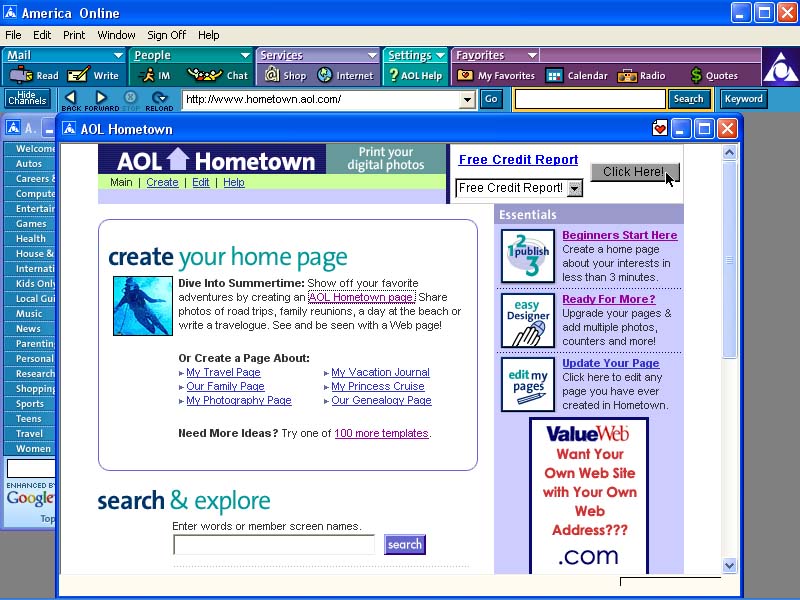Diversification is great. That is, provided that you have the resources.
It makes little sense to diversify your stock portfolio with $1000 in hand. Firstly, you won’t be minimizing risk through diversification. The extra transactional costs will result in immediate inefficiencies when you scale them against the returns. Secondly, you miss out on the benefits of concentration e.g. ability to sell off quickly and conveniently.
Billionaire (or even millionaires) investors, on the other hand, would do well to diversify. The same holds true for the companies they run.
Alphabet, the parent company of Google, has taken diversification to the next level: from cloud services, countless web apps, communication platforms and every service that can run on a server,
Here’s the ‘no shit, Sherlock’ lesson: you are not running Google, or even anything remotely close in size to one of its regional subsidiaries.
As a startup or small business, you probably shouldn’t be designing and contract manufacturing five products before going to market. It’s just a bad idea: you will be stretching your resources thin before leveraging the benefits of having a successful product already in the market.

Pretty straightforward, you say. But how does this relate to content?
Think Small
Now, take this lesson and apply it to your website, blog, or social media brand. You probably would love for your blog, video channel, or Instagram brand to be all about ‘you’: the multifaceted human being with dozens of hobbies, interests, passions, and skillsets. Wouldn’t that be convenient?
From rhinoceros beetles, Coldplay, Keras models, fragrances, new iPhones, delicious middle eastern food, and what-not – there is so much you have to offer the world.
But here’s the deal. Just as small companies struggle with diversification, content creators do no better.
Yes, we are fine with Kylie Jenner sharing gangsta rap lyrics and adorable beagle pictures, but she can afford to do that largely in part because of her status as a market leader in the beauty products industry. The laws of diversification in business seem to fit right in with the content creation game.
In a 1996 essay, Bill Gates wrote that ‘content is king’. Gates posited that content is where the real money will be on the internet in the foreseeable future. Today, almost all companies, regardless of their size and products they sell, have a ‘content plan’.
Go to any new Silicon Valley startup’s website. They will invariably be running a blog and a YouTube channel.
As an early stage / growing content creator, it is essential that you abide by the rules that govern the space. Only then can you go about the task of breaking these rules when people least suspect.
Staying Lean
Over the last two decades, I have created/managed and scaled more than 30 brands scattered across various industries.
The more successful ones, despite my personal inclinations, have been the ones that stuck to a niche and capitalized on it.
This holds equally true for blogs and social media brands.
Your chances of launching a blogging super site like Buzzfeed are next to zero in this day and age. On the other hand, if you’re inclined on starting a Facebook Group about Belgian Shephards, you’d be surprised at how much potential you have in your hands, despite your limited resources.
From as far back as I can remember, I held the fatal desire of being a ‘big time’ content creator. Between the age of 13 and 17, I launched anywhere from 7 to 10 websites, or ‘homepages’ as we kids often called them thanks to the nomenclature carried over from the AOL days..
Only one website focused on a particular niche. The other websites meandered from music to movies to plain old satire. No points for guessing which website survived when the dot-com bubble burst in 2000.

Twenty years later, the only content providers that survived were the ones that focused on a niche. Hell, even 95 percent of the early platforms, such as Angelfire and Geocities, eventually fizzled out.
A Method To The Madness
As consumers, our inclination to stick with content-focused outlets makes sense.
Like all human beings, we tend to build a world model built around ‘association’. We associate Huda with ‘beauty products’, we associate ‘UNICEF’ with developmental aid for children, and so on.
With so many brands and channels available through platforms like Google, Youtube, and Facebook, at first, it might seem convenient to access the same channel for different topics. Why not go to the NYT page on Facebook and catch up on everything from sports news to fishing updates?
Unfortunately, that’s not how we are wired. At least those of us living outside the Democratic People’s Republic of (North) Korea.
We prefer the New York Times for our daily briefing but we would rather go to Cosmopolitan for the latest in fashion. And we’d like to stick to TMZ for the cheap celebrity gossip. Similarly, we follow Harvard Business Review for articles on good work practices, Architizer for when we want to catch up on the latest technological advances in the field of architecture and Prince Ea when we want to binge-watch dumb inspirational videos.
As consumers, we like to diversify and gloat within the ocean of choice.
Do What You’re Good At
With so much high-quality content available on every topic imaginable, people have started to expect more from the videos, articles, and social media posts they consume.
There are some key components that determine whether a reader or viewer has any interest in what you’re saying at all. Legitimacy is one of the most important. Does the person see you as a credible authority on the subject? If not, you might be lucky to have them scroll through your 1300 word article once, but don’t count on much lifetime value (LTV). Building authority and legitimacy takes expertise, time, and a whole lot of effort.
Case Study: Conrad Thompson

Conrad Thompson was a mortgage broker by trade who happened to be a diehard fan of wrestling. A few years ago, Conrad launched a modest wrestling podcast which gradually picked up pace and a small loyal following.
Unbeknownst to him, Conrad was reaping the fruits of being a ‘prime mover’ in the wrestling podcast market. Soon after, Conrad launched another podcast alongside wrestling legend Ric Flair. And then another one. Jim Ross. Eric Bischoff. The podcasts kept coming.
This growing popularity indirectly drove huge gains for his mortgage business, but his content focus always remained the same. He did not delve into 80’s arcade games, country music, or rodeos. Conrad had his niche.
Today, this generally unassuming, fairly nonchalant podcast host has become a household name in pro wrestling circles. He gets invited to host wrestling shows, is identified as a subject matter expert, and reaps the benefits that come with being seen as a ‘legitimate insider’.
Had Conrad been a morning talk show host on a local radio channel, you wouldn’t expect him to come out of that town for a long, long time. But such are the advantages of sticking to what you are good at.
Four Practical Reasons Why
There are four fundamental reasons how adhering to content focus can immediately benefit your online brand.
- Community. If you’ve read Seth Godin’s Tribes, you have a pretty good idea of how important communities are to marketers and content creators of the future. Godin highlights how we all want to be part of a ‘community’.
Today, there are more tribes and sub-tribes then ever before. Each tribe has it’s own niche – it’s own identity with its own interests and beliefs. And even if your target audience (or ‘tribe’) has a population of just 50,000 across the world, that’s 50,000 highly engaged people searching for a way to connect with their tribe. - Search Engine Optimization. You will want to be ranked in the first search engine results page for your target keyword(s). It’s as simple as that. 90 percent of people using Google Search don’t click beyond the first page. More than 70 percent click on one of the first three results. The number one way to crack Google’s ranking algorithm is to create great focused content.
This entails choosing the right keywords and regularly uploading content geared towards these keywords. Good luck getting ranked with the big boys if you’re writing about Pakistan’s northern areas, the new iPad, and Stephen Hawking within the same blog. This isn’t the AltaVista of ’99. - Ad Revenue. If you are using an ad platform like Google Adsense or Taboola, it makes business sense to have focused content. Firstly, you get a significantly better idea of how much it is you should be earning by comparing with industry numbers. With a blog about insurance products, for example, you have several sources to refer to when estimating how much you should be earning considering your traffic and location.
It becomes much tougher (almost impossible) when your content is scattered across dozens or hundreds of unrelated keywords. What’s worse, such websites usually attract the cheapest advertisers: ‘fast fashion’ drop shippers, low-margin FMCGs as well as nonprofit campaigns. The result? Poor ROI. - Partnerships. More than 50% of all income made my micro-influencers can be attributed to paid partnerships or sponsorships. But here’s the catch. These companies are almost always looking for influencers and bloggers with some credibility in their particular domain.
Having worked with a dozen food businesses and collaborated with hundreds (if not thousands) of influencers, I can say from personal experience that we almost always look for influencers that are focused on food and eating out. For one, their followers are highly engaged and follow them specifically for their food related content.

The Outliers
There are three types of individuals and entities, however, that are generally immune to laws that subvert diversification. If you fall into one of these categories, feel free to publish content as per your heart’s liking If you are like most of us, however, tread softly.
Early Influencers & Social Media Stars
These are the men and women who became famous for just moving their asses when it made little sense to do so. Who knew they would go on and become celebrities in their own right? Ever heard of PewDiePie? Or how about Zaid Ali? Do we really care what niche these guys belong to?
Whether it’s making funny videos, social commentary, or just covering a random walk in the park with a GoPro, these individuals are bloggers of the traditional kind. We don’t care if they know an iota about video games, relationships or business, we still follow them. They are famous for being famous. Kind of like Kim Kardashian.
Large Diversified Content Creation Companies
These are large content curation companies that have done so well in one niche that they quickly expand to other areas. Your Facebook feed is probably scattered with posts by these aggregation workhorses. VICE is a big example here. What started with a website and YouTube channel focused on counterculture topics has now become a media juggernaut, producing content on everything from extinct turtles to sports betting. VICE now runs multiple YouTube channels and multiple websites, each with its own particular flair and area of focus.
Movie & Television Stars and other ‘Traditional’ Celebrities
Yes, celebrities get a lot of freehand. Being a movie star or boxing world champion makes you a brand name. That’s why it’s fine if Angelina Jolie or DiCaprio spend most of their social media mileage on social issues, women empowerment, and climate change. They’ll still get followers. They’ll still generate engagement.
A Sticky Plan
Now that we are sure that you don’t fall into one of the categories above, what is the way forward, you ask?
Well, it’s quite simple. If you’re small (as a business), energetic and want to grow, choose a niche and stick to it. Better yet, It would make sense to have a fair deal of expertise in that particular subject and have the propensity to learn as you go on.
I often shoot an anecdotal scenario to clients when highlighting the importance of content focus. Imagine you follow ‘Elora’s Kitchen’ among a dozen other food channels on YouTube. Gradually, a number of these channels diversify their content. Soon, you see videos related to homeschooling and DIY repair work showing up on your feed. How inconvenient – all you wanted were some macaroni and cheese recipes, and now you’re being flooded with videos on topics you have little to no interest in. Guess what you will do next? That’s right, you will unfollow the page.
Brands that lack contextual content have high churn rates. It’s a simple marketing fact.
Today, the top 100 YouTube channels, almost all with highly focused content verticals, have 110 billion views from just over 95,000 videos!
Even platforms are beginning to join the party. We are increasingly seeing YouTube, Blogger, and Instagram alternatives that are focused on a particular niche. ‘A Facebook for Bikers’ or an ‘Instagram for Cooks’ are all plausible platforms in the near future specifically because they help to cut down the noise from both ends (consumer and brand).
So what are you waiting for? Go ahead, find your niche – and stick to it.


Leave a Reply